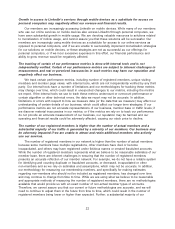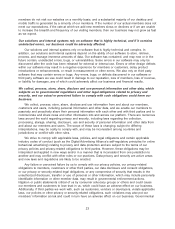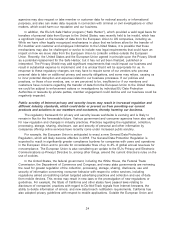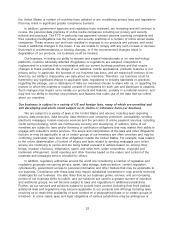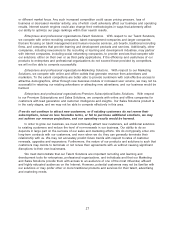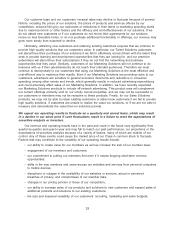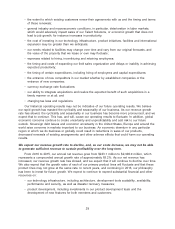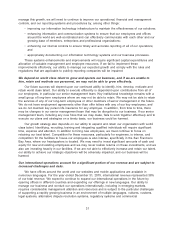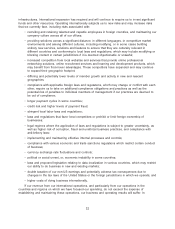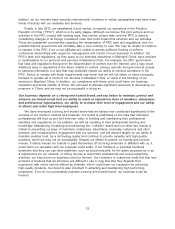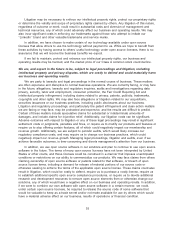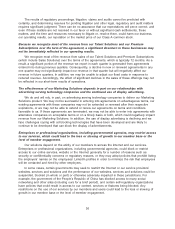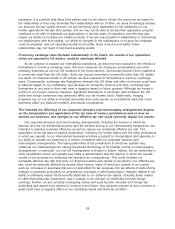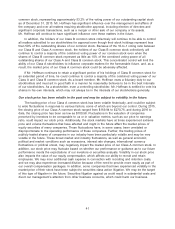LinkedIn 2015 Annual Report Download - page 34
Download and view the complete annual report
Please find page 34 of the 2015 LinkedIn annual report below. You can navigate through the pages in the report by either clicking on the pages listed below, or by using the keyword search tool below to find specific information within the annual report.infrastructures. International expansion has required and will continue to require us to invest significant
funds and other resources. Operating internationally subjects us to new risks and may increase risks
that we currently face, including risks associated with:
• recruiting and retaining talented and capable employees in foreign countries, and maintaining our
company culture across all of our offices;
• providing solutions across a significant distance, in different languages, in competitive market
environments and among different cultures, including modifying, or in some cases building
entirely new services, solutions and features to ensure that they are culturally relevant in
different countries and conforming to local laws and regulations, which may include modifying or
blocking content in certain jurisdictions if it is deemed objectionable or unlawful;
• increased competition from local websites and services that provide online professional
networking solutions, online recruitment services and learning and development products, which
may benefit from first-mover advantages. These competitors have expanded and may continue
to expand their geographic footprint;
• differing and potentially lower levels of member growth and activity in new and nascent
geographies;
• compliance with applicable foreign laws and regulations, which may change or conflict with each
other, require us to take on additional compliance obligations and practices as well as the
potential risk of penalties to individual members of management if our practices are deemed to
be out of compliance;
• longer payment cycles in some countries;
• credit risk and higher levels of payment fraud;
• stringent local labor laws and regulations;
• laws and regulations that favor local competitors or prohibit or limit foreign ownership of
businesses;
• legal regimes where the application of laws and regulations is subject to greater uncertainty, as
well as higher risk of corruption, fraud and unethical business practices, and compliance with
anti-bribery laws;
• implementing and maintaining effective internal processes and controls;
• compliance with various economic and trade sanctions regulations which restrict certain conduct
of business;
• currency exchange rate fluctuations and controls;
• political or social unrest, or, economic instability in some countries;
• laws and proposed legislation relating to data localization in various countries, which may restrict
our ability to do business in new and existing markets;
• double taxation of our non-US earnings and potentially adverse tax consequences due to
changes in the tax laws of the United States or the foreign jurisdictions in which we operate; and
• higher costs of doing business internationally.
If our revenue from our international operations, and particularly from our operations in the
countries and regions on which we have focused our spending, do not exceed the expense of
establishing and maintaining these operations, our business and operating results will suffer. In
32


